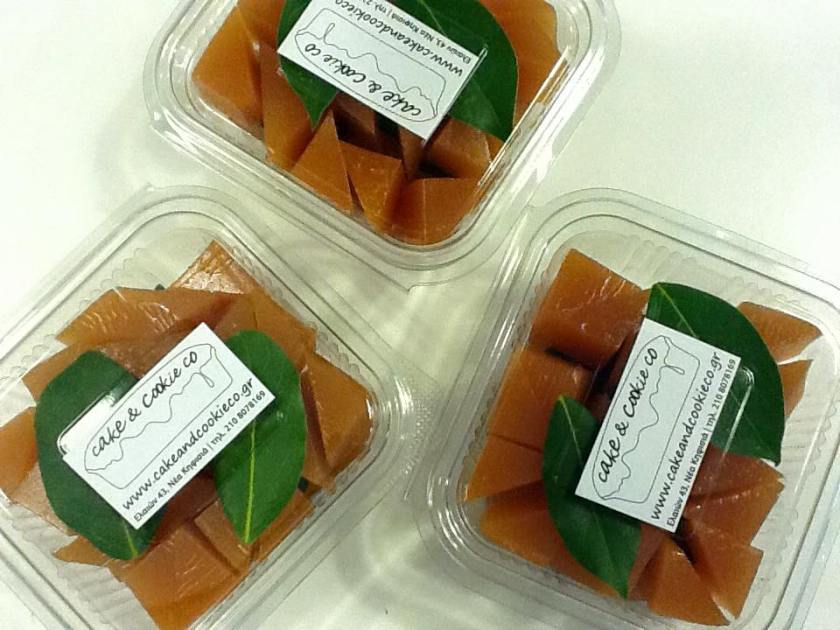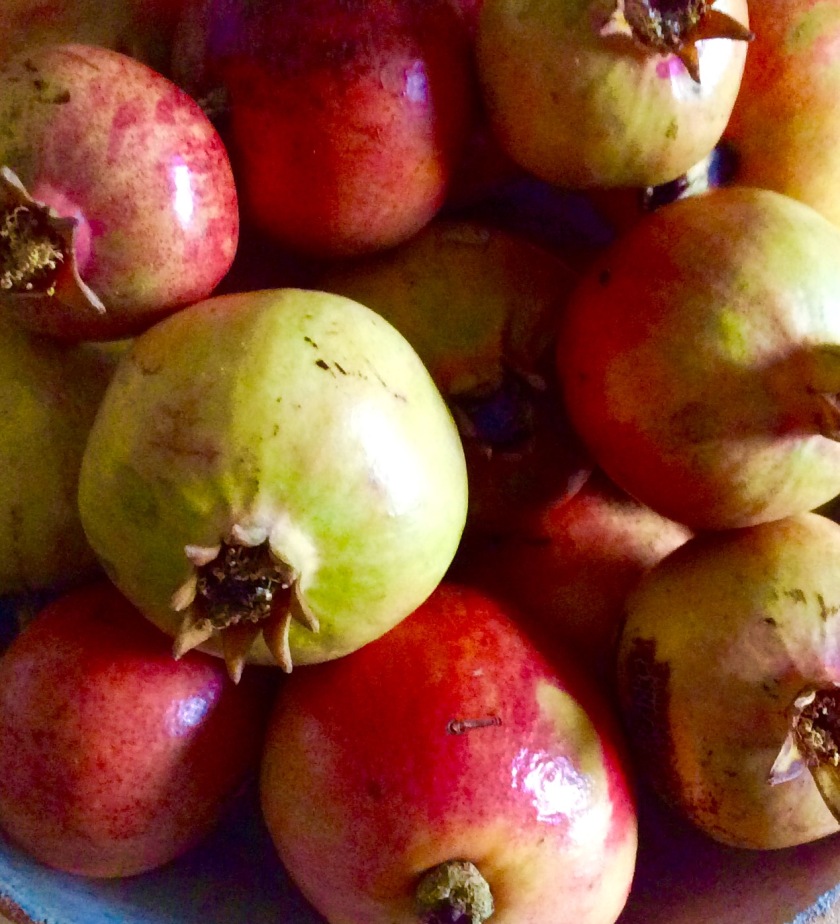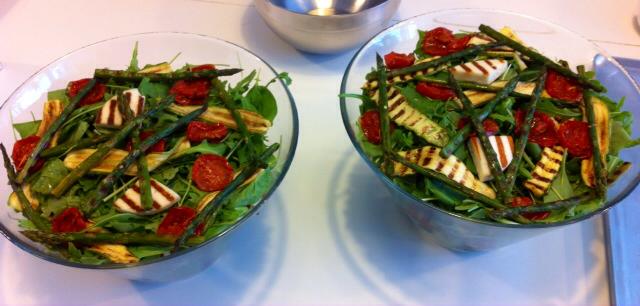On another TBT, I thought I’d repost this blog for newer readers who are interested in seasonal Greek customs.
Christmas may be over but the festivities are far from finished. In Greece the New Year celebrations are considered more important than Christmas, and are connected to Saint Basil, whose nameday falls on January first. This is when gifts are opened, since our Santa Klaus or Father Christmas is Aghios Vasilios or, familiarly, Aï Vasilis.
These are the main festive customs:
Βασιλόπιτα – Vasilopita (Basil’s cake)
After midnight on December 31, with the ushering in of the new year, there is the cutting of the Vasilopita, which is either tsoureki, a kind of brioche, or a cake – usually flavored with orange and sometimes containing candied fruit and nuts. A coin we call a flourí is slipped inside and, once the cake is distributed, the person who gets it is supposed to have extra good luck for the rest of the year.
In older days and in affluent households the coin used to be gold (usually an English gold pound) but nowadays it is mostly some kind of gold charm with the year etched on. Sometimes there can be a gift associated with it.

The Vasilopita has to be entirely distributed so it is divided equally amongst those present – the family, visitors and anyone working in the house are included. Tradition varies, but the first slice is usually reserved for Christ, the second for the house and the third for the poor. Then everyone gets their piece according to age, the eldest being first (or sometimes the householder). In my home the youngest child has to choose which piece will be cut first and then we proceed in a clockwise direction. People must not look for the coin until everyone has had their piece. Then there is usually a silence – often the person who has found the coin says nothing, to prolong the suspense – and the ‘discovery’ is followed by applause, congratulations and good wishes: Χρόνια Πολλά (Chronia Polla – Many Years) or Καλή Χρονιά (Kali Chronia – (May you have a) Good Year).
The Vasilopita is considered so essential to the start of each year that one is shared out not only in each and every home, but in the workplace – in offices, shops, public organizations – and even sports clubs and other associations. Because of the difficulty of getting everyone together, pitas are cut well into February and sometimes even March!
The story behind this custom is the following, although some versions existed in even more ancient times: In the 4th century, Aghios Vasilios was the Archbishop of Caesarea, an area of Cappadocia. A local tyrant was threatening to conquer and loot the town, so all the citizens gave their valuables to Aghios Vasilios, to give the tyrant in lieu of ransom, so the town would be spared. The tyrant, however, was deflected from his goal by the intervention of another Saint, Aghios Mercourios. Vasilios had the hard task of returning the valuables to their owners, but he had no idea what belonged to each. So he asked the townspeople to bake small loaves, inside which he hid the valuables, and which he then distributed at random. Upon breaking open the loaves, the parishioners were astounded to see they had each got their rightful belongings!
The Vasilopita was not the same in every part of Greece. In many places it was a savory pie, containing different meats and vegetables, such as leeks. Various spices and flavorings were used in both sweet and savory pies.
The surface of the cake or pie bore many decorations, according to local custom and the occupation of the householders. For example, in Asia Minor, the top was decorated with the double-headed eagle, symbol of the Byzantine Empire. Elsewhere, housewives etched the top with Saint Basil’s and the householder’s initials,and with barrels of wine, sheaves of wheat, lambs and goats, plows and boats, or anything else they wanted blessed for the new year.
There is still a large variety of Vasilopita to be found, but nowadays most are sweet.

Καλή Χέρα – Kali Hera (good hand)
Gifts of money are traditionally given to children on New Year’s Day. In some places, the custom was to give a gold coin, especially by grandparents to their grandchildren.
Σπάσιμο Ροδιού – Smashing of pomegranates
Another tradition thought to bring good luck for the coming year is the smashing of a pomegranate on the threshold of each house. The pomegranate is a fruit with a history going back to ancient times and figures prominently in mythology. It is widely revered as a symbol of regeneration, fertility and prosperity.
 The pomegranate smashes to the floor and the red grains scatter in all directions, spreading good fortune in the household, office or shop.
The pomegranate smashes to the floor and the red grains scatter in all directions, spreading good fortune in the household, office or shop.
Κρεμύδα – Kremyda (Onion or squill bulb)
A squill bulb, or even a plain onion, sometimes wrapped in foil to deflect bad spirits, is hung above the front door on New Year’s Eve. Because of its many layers and ability to sprout even when removed from the earth it is meant to symbolize regeneration and growth; this custom is thought to have originated in Ancient Greece. On New Year’s Day the bulb is brought into the house and kept for the rest of the year.
Ποδαρικό – Podariko (First Footing)
The person who first steps into a house on each New Year’s Day is supposed to bring good luck for the rest of the year. That’s why a child, innocent and pure of heart, is often chosen to walk in, always stepping in with the right foot first. This ‘right foot’ custom extends to anyone coming to a house for the first time, especially if it is a new house.

The feast
Most people gather with family and friends to celebrate the New Year, and in some houses an extra place is set at the table for Aghios Vasilios. Another rich meal with a main dish of lamb or pork, cooked according to local tradition, followed by the same festive sweets as Christmas.
In many places the feasting was – and still is – preceded by the killing of a pig, with everyone joining in for the confection of sausages and other delicacies.
Gambling
To while away the time until midnight, decks of cards are brought out since Greeks think it’s good luck to have a flutter on New Year’s Eve. All sorts of games are played but especially black jack and rolling dice; some people even have a roulette wheel. Non-gamblers, but not only, take the opportunity to invest in a national lottery ticket.

Cologne and Fireworks
Many Greeks party the night away on New Year’s Eve and in town centers the traffic is likely to be as dense at five in the morning as it is on a Saturday rush hour! In some places people walk around holding bottles of cologne, with which they spray each other. Often the municipality will put on firework displays for the enjoyment of those out and about.
Kalanda – Carols
If you’re at home on New Year’s Day you have to keep running to open the front door, as children arrive to sing the Kalanda. These are different to Christmas carols, since they celebrate the feast of Saint Basil and the start of the New Year. You have to reward the kids with some coins and maybe a melomakarono or two!
Happy New Year to all!

The photographs of food are courtesy of Cake & Cookie Co, who make delicious goodies!


HAPPY NEW YEAR!!!!! JOY, PEACE, LOVE AND UNLIMITED BLESSINGS….
LikeLike
Same to you both, Ilona!!!
LikeLike
Lovely post as most traditions were done in my yiayia and papou’s home every year as a child. I wish you a Happy, safe New Year! Cheryl (Hatzidakis) Wiser USA
LikeLiked by 1 person
Thank you, Cheryl! Same to you!
LikeLiked by 1 person
Thank you! And Chronia Polla to you too!
LikeLike
Efxaristo-Koukla!
LikeLike
Very interesting ! And I had no idea New Year would be more important than Christmas Night in Greece and why ! We do have a somewhat similar cake in Portugal called “King’s Cake” that we eat on Three Wise Men Day (or King’s Day) on Jan.06 but also on Christmas and throughout the whole Holidays. It used to have a “fava bean” hidden in it , and the one to get it would have to buy it next year , but it also had a small gift hidden it (no longer allowed for sanitary/safety reasons).
Have a Happy New Year 🙂
LikeLiked by 1 person
Thank you ML for the lovely memory lane of the Vasilopita tradition and others. It’s the “little things” (amongst others) like this that makes Greece so special, ancient and beautiful especially during certain holidays. Kali Chronia. Alex
LikeLiked by 1 person
Efxaristo! Episis! Same to you!
LikeLike
Thanks, and Kali Chronia to you too!
LikeLike
Maybe you would like to contact “wandering soul” , she did a wonderful post on “Christmas Around The World” and is preparing one on New Year’s Eve where everyone is welcome to participate 🙂
https://wanderingsoul2015blog.wordpress.com/2015/12/23/merry-christmas-from-around-the-globe/
Deadline tomorrow 23:00 GMT I believe
Turtle Hugs 🙂
LikeLiked by 1 person
Thanks, I’ll certainly have a look. Many hugs and wishes to you too!
LikeLiked by 1 person
Thank you for sharing a beautiful post about the Greek traditions. I love learning about other cultures and foods. Wishing you a Very Blessed New Years!
LikeLiked by 1 person
Thank you and the same to you!
LikeLike
Interesting to read about the coin inside the cake. Here in Sweden we hide a cashew nut or walnut inside a boiled rice pudding. The one who receives the nut is said to get married the next year. Or, if already married, to have an unusually happy and prosperous new year.
Anyhow, M.L., I want to wish you and your family a HAPPY & JOYFUL NEW YEAR! Greetings from Sweden.
LikeLiked by 1 person
Same to you, bb!
LikeLike
A very Happy New Year, what a wonderful celebration in Greece.
LikeLiked by 1 person
Thank you, best wishes to you too!
LikeLike
I do hope that Greece has a more settled year in 2016.
Happy New Year M.
LikeLike
Me too! Best wishes to you too.
LikeLike
I love reading about Greece’s traditions! Thank you so much for sharing! I wish you an upcoming year full of happiness, prosperity and adventure!
LikeLike
Thank you, and all best wishes to you too!
LikeLike
I’ll be watching your recipes. Thanks. Happy New Year!
LikeLike
Also in France, it is the Saint Sylvestre – New Year’s Eve – that is celebrated far more than Christmas. It used to be a tradition – maybe it still is – to put a silver sixpence in the Christmas pudding in England. It’s so long since we’ve lived there that I don’t know if they still do it.
The idea of smashing a pomegranate is appealing, as it is a fruit that I have never enjoyed eating, nor the fiddlesomeness of extracting it from it’s peel, but those small red jewels are very beautiful and would look pretty scattered around.
Happy New Year, and may things improve for Greece. 🙂
LikeLike
Thank you, and Happy New Year to you too!
LikeLike
Thank you!
LikeLike
What a lovely post full of interesting traditions! That sounds like so much fun and I had no idea New year was so important and more celebrated than even Christmas! I want to find a coin!
LikeLiked by 1 person
I’m drooling! What a fascinating New Year’s traditions. Thanks for always being a dependable source to tell the stories of life and times in Greek 🙂
LikeLiked by 1 person
M.L…. thank you for a fascinating inside into Greek holiday traditions and their history. I just loved it!
LikeLiked by 1 person
M.L. May you enjoy a happy, healthy and prosperous New Year.
LikeLiked by 1 person
Thank you, Harold. I’m glad you enjoyed it!
LikeLiked by 1 person
What great traditions! This was so interesting. It sounds like a lot of fun.
LikeLike
Thanks! It is
LikeLiked by 1 person
Thank you for another great lesson on customs in Greece.
LikeLike